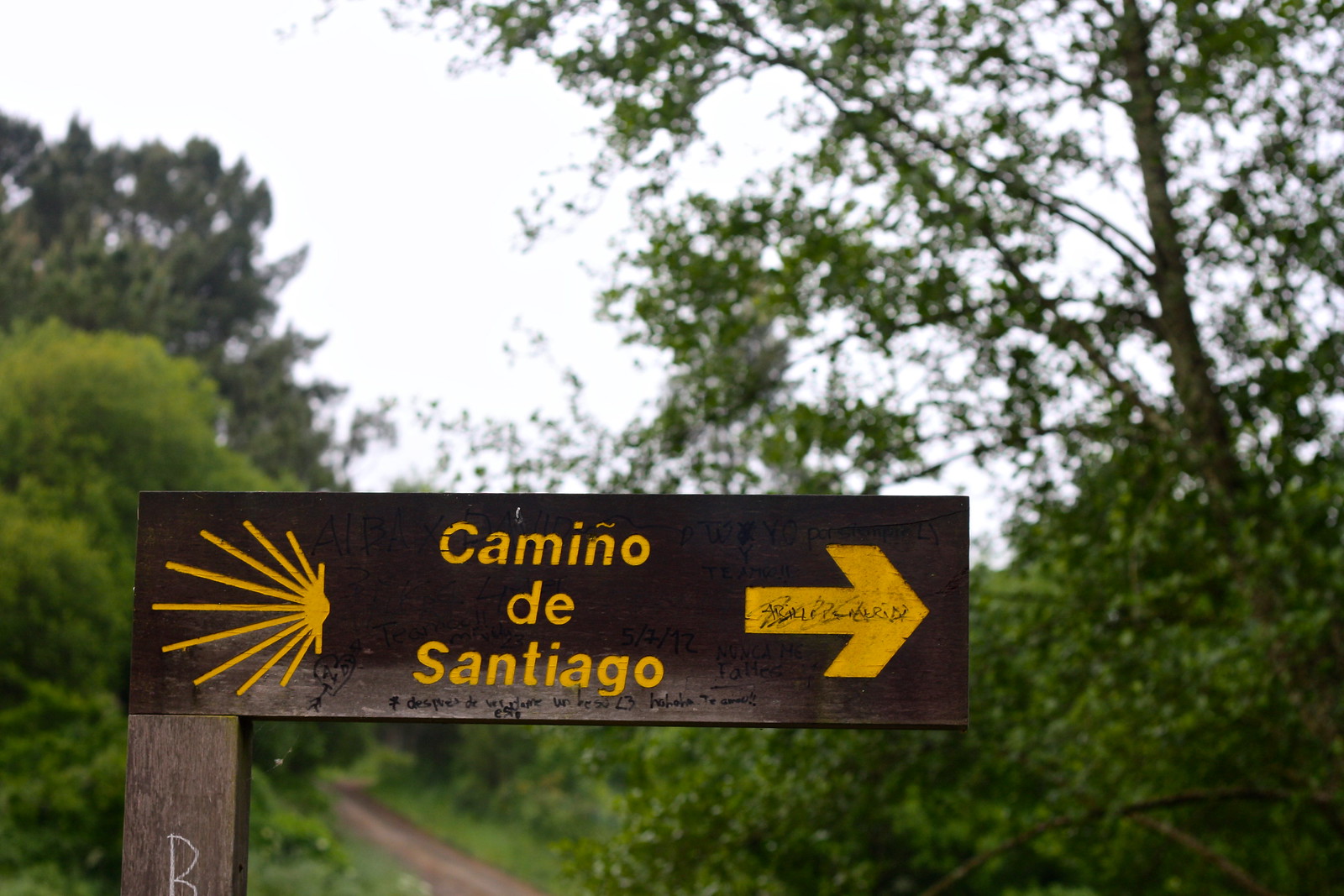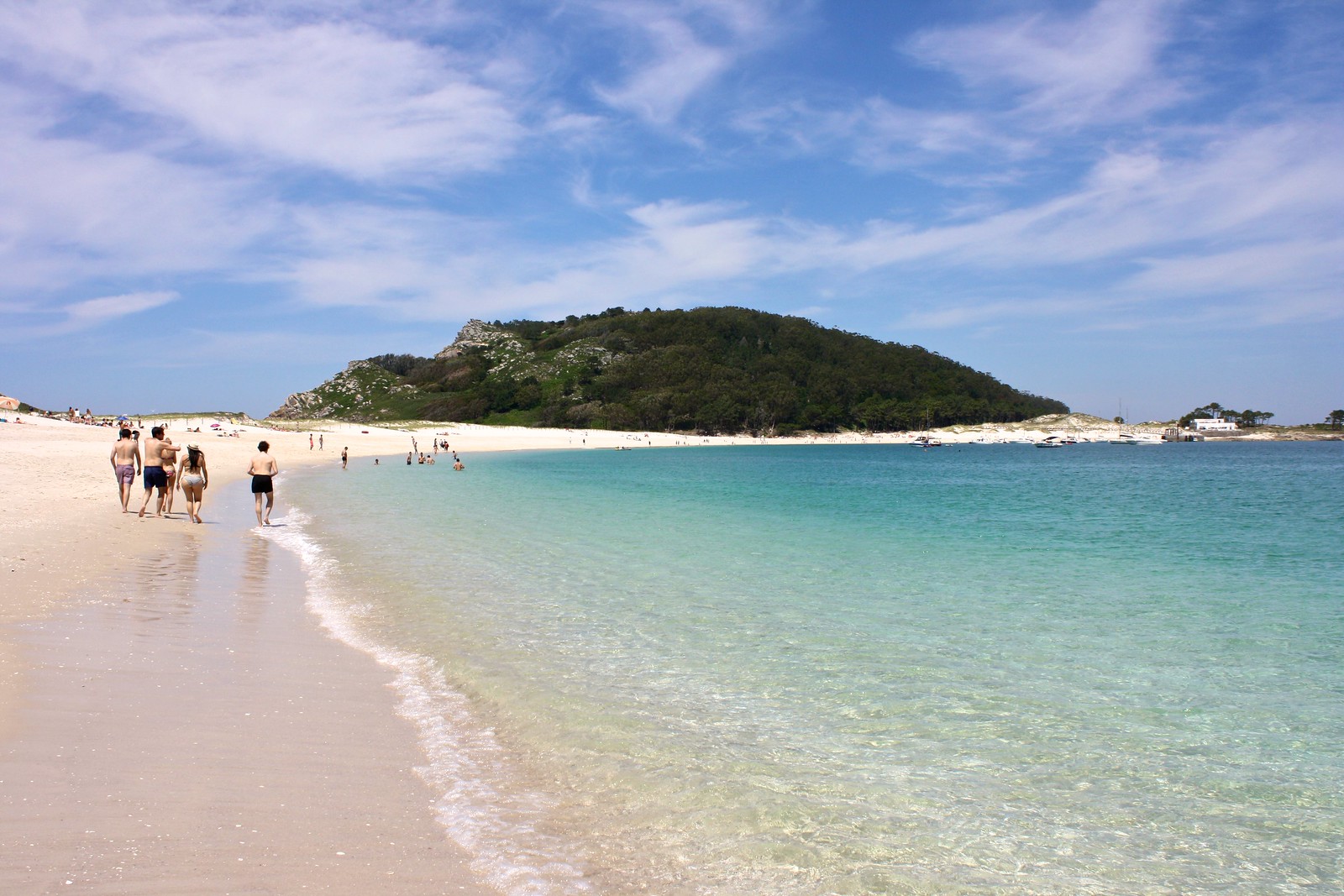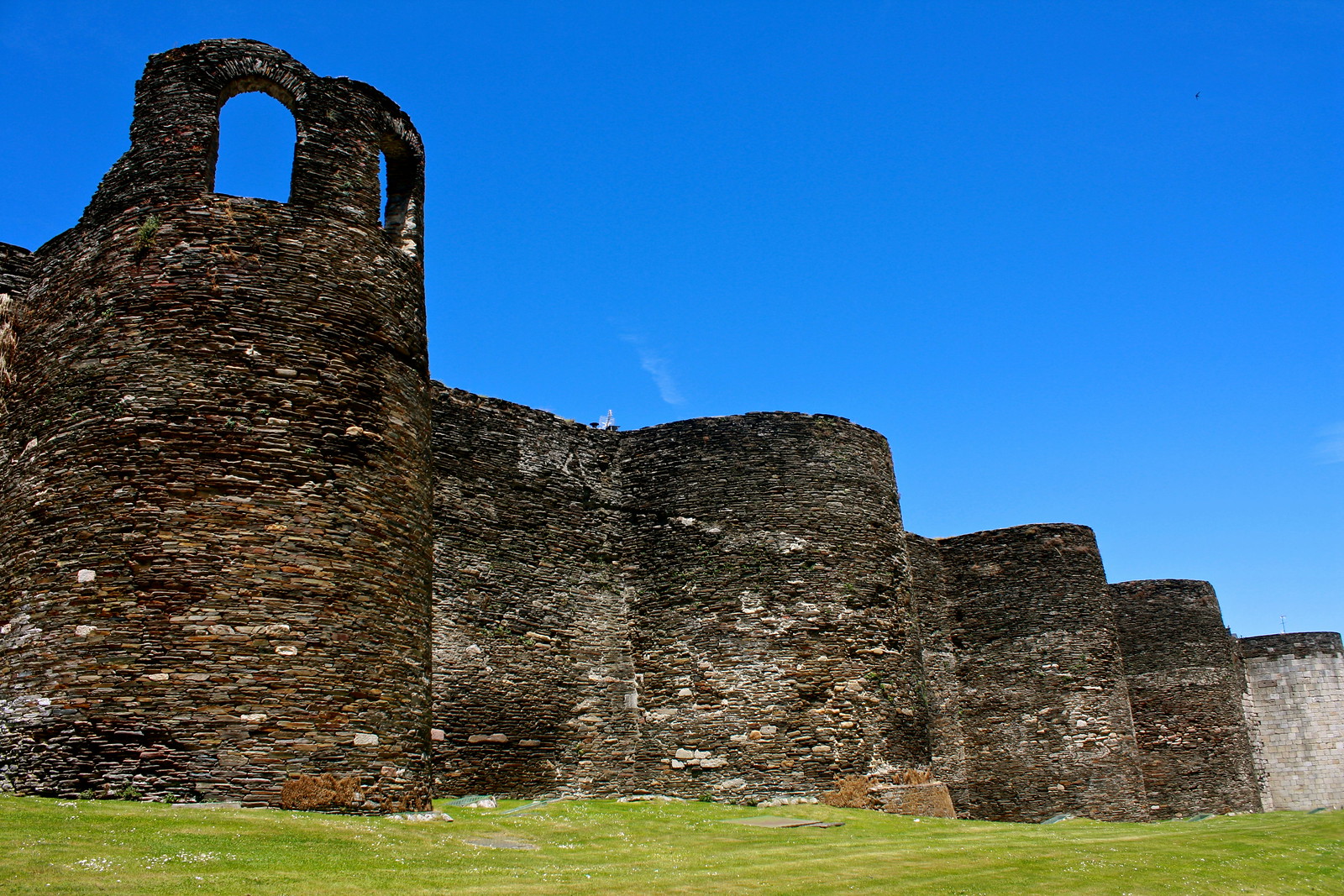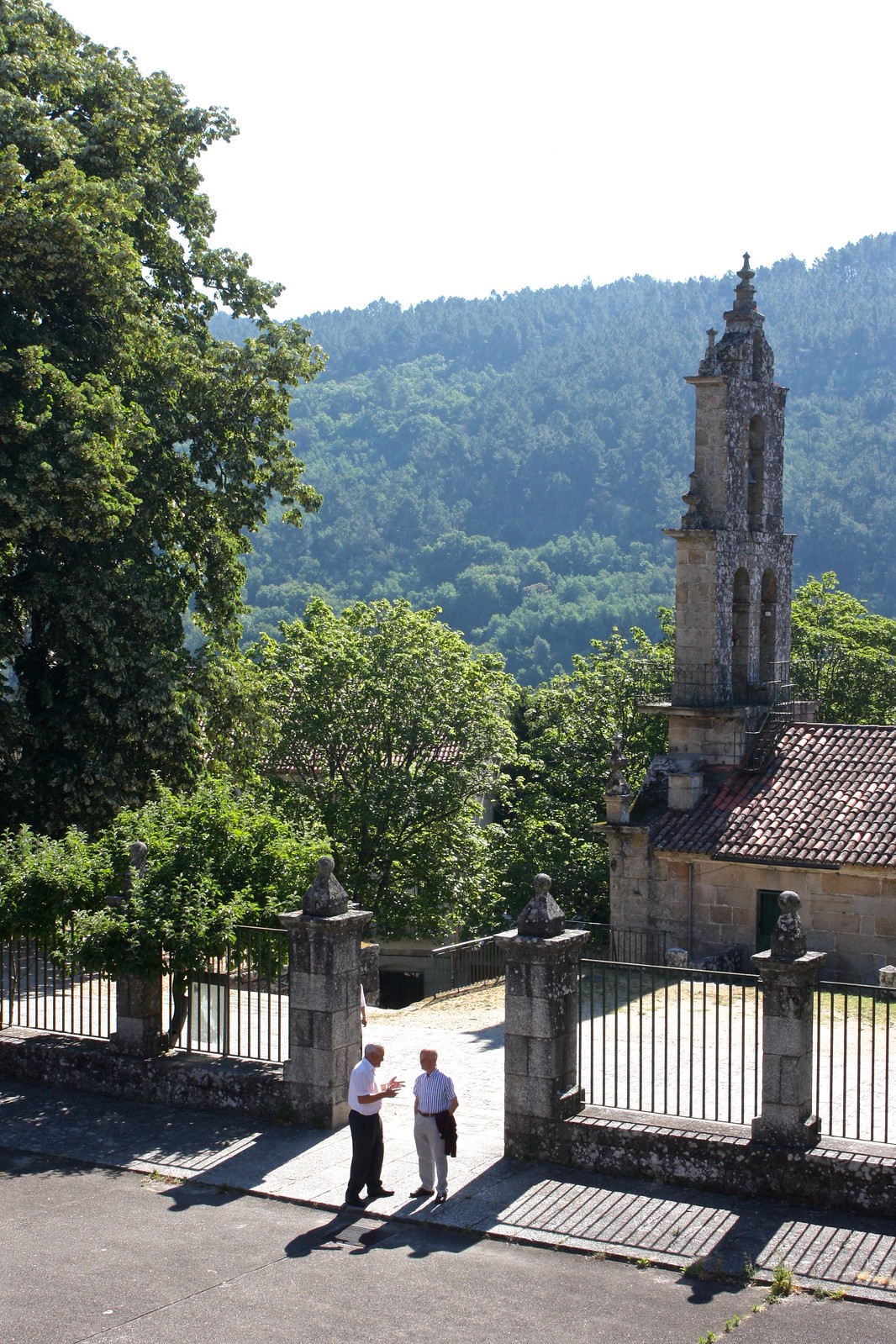Galicia
From September 2013 through June 2015, I lived and worked in the northwestern Spanish region of Galicia and gained an intimate knowledge of this part of the country. Sitting right on top of Portugal, Galicia has historically been isolated from the rest of Spain by rugged mountain ranges that helped it preserve its language and culture over the centuries. Today, though, it’s only a five-hour high-speed train ride away from Madrid to Santiago de Compostela, the capital.
Galicia, more than anywhere else in Spain, defies the Franco-era stereotypes of bullfighting, flamenco, and sunshine. It’s often called the Ireland or Scotland of Spain not just because it shares a similar rainy climate and lush, green countryside, but also because the influence of the Celts has endured the longest here—they even play bagpipes!
As it’s out of the way of the standard Sevilla–Madrid–Barcelona arc many visitors to Spain tend to stick to, Galicia isn’t very well-known by the general public…for better or for worse. But after living there for two school years, I became a huge promoter of this special region, and I can’t but help encourage others to spend some time in this cozy, laid-back, and delicious corner of the world.
I’ve put together this page to corral all of the blog posts I’ve written about Galicia and to serve as a reference and an inspiration for anyone curious about this unique part of Spain.
If you already speak Spanish, you won’t have any trouble ordering food, asking questions, or making conversations, as everyone is either bilingual in both languages or grew up speaking Spanish at home. Still, it helps to learn a few phrases in Galician and arrive mindful that Galicia is a nation within a nation.
I’ve written a comprehensive guide to the Galician language that will help you get up to speed if you already speak a little Spanish.
The Way of St. James began as a pious act of penance for Europeans in the Middle Ages, and while it’s still a religious experience for many in the 21st century, for most folks, it’s more of an adventure, a means to encounter Spanish culture and the countryside at a relaxed pace.
You can meet the 100-km minimum to receive a certificate from the Catholic Church by staying entirely within Galicia, so you might want to consider spending some of your time in the region along one of Camino’s trails—whether it’s for a solid week on foot or just a daytrip.
Even if you don’t become a peregrino yourself, expect to see backpack-laden pilgrims from one end of Galicia to the other with scallop shells—St. James’ emblem—on their backpacks.
Cathedrals Beach—a beach accessible only during low tide whose jagged cliff walls have eroded into natural arches that resemble the flying buttresses of a Gothic cathedral
Cíes Islands—three pristine islands off the coast of Vigo with white-sands beaches and lush forests
Ézaro Waterfall—where the only river in mainland Europe empties into the sea via a waterfall
Sil River Canyon—a steep canyon that’s studded with Romanesque monasteries and lined with terraced vineyards
Old Town of Santiago de Compostela—The Camino de Santiago quite literally put Santiago on the map, and the pilgrimage’s explosion in popularity during the Middle Ages turned Santiago into the third-holiest city in the Christian world. As befitting a major religious center, Santiago boasts a cathedral that is a Romanesque and Baroque masterpiece as well as a plethora of monasteries, churches, and university halls.
Roman Walls of Lugo—Countless cities across western Europe owe their existence to the Roman Empire, but in nowhere else can you find a completely intact set of defensive walls that still circle the original Roman settlement. Best of all, you can even go up and walk on top of the walls that surround Lugo’s old town!
Tower of Hercules—Continuing the Roman theme, A Coruña’s got its own imperial monument: a massive lighthouse that has guided navigators without interruption since Roman times. It was restored with Neoclassical cladding in the 1700s, so it’s the level of continuity with antiquity that is truly astonishing.
Betanzos—this village boasts a well preserved historic core home to several Gothic churches—a rarity in Galicia—as well as a par-cooked or “runny” Spanish potato omelet
Carnota—you won’t have trouble finding a place to lay out in the sun on Carnota’s vast beach, plus, if you’re a nerd like me, you can check out Galicia’s longest hórreo or granite granary for corn
Combarro—regularly appearing on most-beautiful-village lists, Combarro’s got a main drag dating back to the 1700s, and you can walk it today to find great seafood restaurants and shops selling traditional flavored liqueurs, like coffee-infused licor café
Fisterra—keep walking west along the Camino after Santiago and you’ll end up on the Atlantic Ocean at the pilgrimage’s true ending point: the Spanish “Lands End”
A Guarda—make the trek to Galicia’s most southwesterly point for castros, Celtic mountainside ruins that face the sea, but stay for the freshly caught seafood
Mondoñedo—this cozy cathedral town emerges from foggy, rolling hills offering you slices of dense, multi-dimensional tarta de Mondoñedo cake
Noia—often called the “Port of Santiago,” Noia’s got an excellent fish market as well as parish churches built in the unique Mariners’ Gothic style
Ordes—while Galicia doesn’t play a big part in Spain’s street art scene, Ordes hosts a urban art competition every year that spruces up this otherwise-ugly town
Padrón—if you’re familiar with Spanish literature, you’ll flock to Padrón for the two major poets of the 19th and 20th centuries it produced; for everyone else, you’ll gravitate to Padrón’s tapas bars to try the town’s eponymous green peppers
Ribadavia—once home to a thriving Jewish community, Ribadavia keeps their memory alive at a fabulous bakery; wash down almond-and-sesame treats with Ribeiro wine grown in vineyards outside the city limits
Ribeira—your prototypical fishing village and beach town is also a gateway to protected sand dunes and prehistoric ruins
Tui—this village has a cathedral that nearly collapsed but for stabilizing buttresses; to get panoramic views of Tui, head across the Portuguese border to the fortress in Valença do Minho
I can’t recommend octopus highly enough. Polbo á feira consists of tender, slow-boiled common octopus garnished with extra-virgin olive oil and smoked paprika. It’s often served with boiled potatoes (cachelos). Traditionally a dish for fairs and festivals (octopus at Lugo’s San Froilán celebration is exquisite), it’s now available at Spartan pulpería restaurants.
The Galician tapa par excellence has to be Padrón peppers. As a rhyme in Galician goes, “some are spicy, others aren’t,” these small, sometimes-spicy green peppers are sautéed in olive oil until wrinkly and garnished with coarse sea salt. You’ll be thirsty after eating these guys one way or another, so wash ‘em down with white Albariño wine.
Empanada makes for a great picnic food or road snack. A little different from Argentine-style pocket pies, these meat pies are the size of entire baking sheets! You can find anything from tuna-and-sofrito-sauce to cod-onion-and-raisins or even sweet options stuffed between two layers of puff pastry.
Owing to its heritage as a milk-producing region, Galicia manufactures several varieties of cow’s-milk cheeses. My favorites include the mild, boob-shaped tetilla or the smoky, firmer San Simón da Costa.
Every town in the region plays their own variation on the same lemon-and-butter theme when it comes to cakes and desserts. But Santiago de Compostela’s, the tarta de Santiago, flies above the rest. It’s not just deceptively simple—just ground almonds, sugar, and eggs—it’s the intense almond flavor that is unmistakably Compostela. Bakers traditionally sprinkle powdered sugar over a metal cross, leaving a Cross of St. James behind.
Once you’re in Galicia, you can take advantage of trains that link A Coruña, Santiago de Compostela, Vigo, and Ourense and zip around at blazingly fast speeds. The slower Feve narrow-gauge railway starts in Ferrol and continues along the northern coast into Asturias, Cantabria, and the Basque Country.
Most of the interesting villages you’ll want to see aren’t on the major train lines, however; you’ll need to take the bus to visit them. Monbus has the most extensive connections, with companies like Freire going to Lugo and Arriva to the northern and western coasts.
July and August make up the high season (when most Spaniards and school children have time off for summer vacation) and can be smoky due to recurring forest fires. The comfortable shoulder season runs through October, but these months are shared with the rainy season. My personal favorite time of year in Galicia is November, when you can expect a reprieve from the rains and look forward to roasted chestnuts. December is special indeed, as Christmas lights reflect over granite street pavers that are glossy from fresh rain showers.
Where to go: Make a loop of things by starting in A Coruña, where wall-to-wall galerías or glassed-in balconies cover houses along oceanfront avenues and where the Tower of Hercules still functions as a lighthouse, as it has since Roman times.
Move on to Santiago de Compostela, the capital, for the best old town in Galicia and a cathedral replete with legends, prayers, and architectural add-ons. Daytrip to Fisterra on the coast to experience the “end of the world,” then head down to Vigo to visit the white-sands beaches of the Cíes Islands in summer—or pretty Pontevedra in the winter.
Continuing to Ourense, relax in natural hot springs and chow down on boiled octopus for lunch. Then, take in views of the vast canyon of the Sil River as you explore the ancient monasteries of the Ribeira Sacra.
Head north to Lugo and make a loop of the old town—on top of the old Roman walls. The tapas scene here is incredible, so pack an appetite. Double-check when low tide is before you visit the Cathedrals Beach on the northern coast. Finish your circuit back in Coruña.
Have you ever heard of Galicia before? What on this page appeals to you the most? Would you ever consider stopping off here on your next trip to Spain? Let me know your thoughts down below in the comments thread!
Galicia, more than anywhere else in Spain, defies the Franco-era stereotypes of bullfighting, flamenco, and sunshine. It’s often called the Ireland or Scotland of Spain not just because it shares a similar rainy climate and lush, green countryside, but also because the influence of the Celts has endured the longest here—they even play bagpipes!
As it’s out of the way of the standard Sevilla–Madrid–Barcelona arc many visitors to Spain tend to stick to, Galicia isn’t very well-known by the general public…for better or for worse. But after living there for two school years, I became a huge promoter of this special region, and I can’t but help encourage others to spend some time in this cozy, laid-back, and delicious corner of the world.
I’ve put together this page to corral all of the blog posts I’ve written about Galicia and to serve as a reference and an inspiration for anyone curious about this unique part of Spain.
The Galician language
What sets Galicia apart from the rest of the country isn’t its rainy, Atlantic climate or its varied, delicious cuisine, it’s the Galician language spoken by most residents. Galician is a Romance language with its own grammar, vocabulary, and sounds, so don’t go around calling it a dialect of Spanish—but the two languages are very, very similar. |
| The Galician language even has its own font |
If you already speak Spanish, you won’t have any trouble ordering food, asking questions, or making conversations, as everyone is either bilingual in both languages or grew up speaking Spanish at home. Still, it helps to learn a few phrases in Galician and arrive mindful that Galicia is a nation within a nation.
I’ve written a comprehensive guide to the Galician language that will help you get up to speed if you already speak a little Spanish.
The Camino de Santiago connection
The half-dozen or so routes of the Camino de Santiago pilgrimage route all converge on Galicia, ending at the cathedral of Santiago de Compostela, where the Apostle St. James is said to be buried.The Way of St. James began as a pious act of penance for Europeans in the Middle Ages, and while it’s still a religious experience for many in the 21st century, for most folks, it’s more of an adventure, a means to encounter Spanish culture and the countryside at a relaxed pace.
 |
| Wooden sign for the Camino de Santiago |
You can meet the 100-km minimum to receive a certificate from the Catholic Church by staying entirely within Galicia, so you might want to consider spending some of your time in the region along one of Camino’s trails—whether it’s for a solid week on foot or just a daytrip.
Even if you don’t become a peregrino yourself, expect to see backpack-laden pilgrims from one end of Galicia to the other with scallop shells—St. James’ emblem—on their backpacks.
Natural wonders
Galicia is defined on one hand by the muted granite terrain of the Galician Massif and on the other by nearly a thousand miles of Atlantic coastline that wriggle their way from southwest to northeast. Its geography has left the region with several impressive marvels:Cathedrals Beach—a beach accessible only during low tide whose jagged cliff walls have eroded into natural arches that resemble the flying buttresses of a Gothic cathedral
Cíes Islands—three pristine islands off the coast of Vigo with white-sands beaches and lush forests
 |
| Praia das Rodas, Cíes Islands |
Ézaro Waterfall—where the only river in mainland Europe empties into the sea via a waterfall
Sil River Canyon—a steep canyon that’s studded with Romanesque monasteries and lined with terraced vineyards
Manmade wonders
For not being a very large region, Galicia is home to no fewer than three cultural UNESCO World Heritage Sites—on par with the region surrounding the capital, Madrid.Old Town of Santiago de Compostela—The Camino de Santiago quite literally put Santiago on the map, and the pilgrimage’s explosion in popularity during the Middle Ages turned Santiago into the third-holiest city in the Christian world. As befitting a major religious center, Santiago boasts a cathedral that is a Romanesque and Baroque masterpiece as well as a plethora of monasteries, churches, and university halls.
 |
| Roman walls of Lugo |
Roman Walls of Lugo—Countless cities across western Europe owe their existence to the Roman Empire, but in nowhere else can you find a completely intact set of defensive walls that still circle the original Roman settlement. Best of all, you can even go up and walk on top of the walls that surround Lugo’s old town!
Tower of Hercules—Continuing the Roman theme, A Coruña’s got its own imperial monument: a massive lighthouse that has guided navigators without interruption since Roman times. It was restored with Neoclassical cladding in the 1700s, so it’s the level of continuity with antiquity that is truly astonishing.
Pretty villages
Although Galicians are rapidly flocking to the region’s half-dozen major cities, they’ve historically mostly lived in villages and the countryside—which means you need to get outside the A Coruña–Vigo built-up area to get the whole experience. This list leans heavily toward the Atlantic coast, but there’s plenty to see in inland Galicia, too.Betanzos—this village boasts a well preserved historic core home to several Gothic churches—a rarity in Galicia—as well as a par-cooked or “runny” Spanish potato omelet
Carnota—you won’t have trouble finding a place to lay out in the sun on Carnota’s vast beach, plus, if you’re a nerd like me, you can check out Galicia’s longest hórreo or granite granary for corn
Combarro—regularly appearing on most-beautiful-village lists, Combarro’s got a main drag dating back to the 1700s, and you can walk it today to find great seafood restaurants and shops selling traditional flavored liqueurs, like coffee-infused licor café
Fisterra—keep walking west along the Camino after Santiago and you’ll end up on the Atlantic Ocean at the pilgrimage’s true ending point: the Spanish “Lands End”
A Guarda—make the trek to Galicia’s most southwesterly point for castros, Celtic mountainside ruins that face the sea, but stay for the freshly caught seafood
Mondoñedo—this cozy cathedral town emerges from foggy, rolling hills offering you slices of dense, multi-dimensional tarta de Mondoñedo cake
Noia—often called the “Port of Santiago,” Noia’s got an excellent fish market as well as parish churches built in the unique Mariners’ Gothic style
 |
| Village views in Ribadavia |
Ordes—while Galicia doesn’t play a big part in Spain’s street art scene, Ordes hosts a urban art competition every year that spruces up this otherwise-ugly town
Padrón—if you’re familiar with Spanish literature, you’ll flock to Padrón for the two major poets of the 19th and 20th centuries it produced; for everyone else, you’ll gravitate to Padrón’s tapas bars to try the town’s eponymous green peppers
Ribadavia—once home to a thriving Jewish community, Ribadavia keeps their memory alive at a fabulous bakery; wash down almond-and-sesame treats with Ribeiro wine grown in vineyards outside the city limits
Ribeira—your prototypical fishing village and beach town is also a gateway to protected sand dunes and prehistoric ruins
Tui—this village has a cathedral that nearly collapsed but for stabilizing buttresses; to get panoramic views of Tui, head across the Portuguese border to the fortress in Valença do Minho
What to eat
I’ll go out on a limb and argue Galicia is the best place to eat in the entire country. Not only do Galician kitchens take advantage of some of the freshest seafood around, they’re also lucky to be so close to a myriad of local farms that grow potatoes, onions, and greens and raise hens and dairy cows.I can’t recommend octopus highly enough. Polbo á feira consists of tender, slow-boiled common octopus garnished with extra-virgin olive oil and smoked paprika. It’s often served with boiled potatoes (cachelos). Traditionally a dish for fairs and festivals (octopus at Lugo’s San Froilán celebration is exquisite), it’s now available at Spartan pulpería restaurants.
The Galician tapa par excellence has to be Padrón peppers. As a rhyme in Galician goes, “some are spicy, others aren’t,” these small, sometimes-spicy green peppers are sautéed in olive oil until wrinkly and garnished with coarse sea salt. You’ll be thirsty after eating these guys one way or another, so wash ‘em down with white Albariño wine.
 |
| Boiled octopus |
Empanada makes for a great picnic food or road snack. A little different from Argentine-style pocket pies, these meat pies are the size of entire baking sheets! You can find anything from tuna-and-sofrito-sauce to cod-onion-and-raisins or even sweet options stuffed between two layers of puff pastry.
Owing to its heritage as a milk-producing region, Galicia manufactures several varieties of cow’s-milk cheeses. My favorites include the mild, boob-shaped tetilla or the smoky, firmer San Simón da Costa.
Every town in the region plays their own variation on the same lemon-and-butter theme when it comes to cakes and desserts. But Santiago de Compostela’s, the tarta de Santiago, flies above the rest. It’s not just deceptively simple—just ground almonds, sugar, and eggs—it’s the intense almond flavor that is unmistakably Compostela. Bakers traditionally sprinkle powdered sugar over a metal cross, leaving a Cross of St. James behind.
How to get around
Getting to Galicia is pretty easy: you can fly into any of the western coast’s three airports (A Coruña/LCG, Santiago de Compostela/SCQ, or Vigo/VGO) via budget airlines like EasyJet, Ryanair, or Vueling. The closest major international airport is Porto in northern Portugal, where you can hop on the Celta train to Vigo, but plenty of daily trains also link the major cities of the region with Madrid and Barcelona. |
| (Source: Flickr user Elentir CC BY-SA 2.0) |
Once you’re in Galicia, you can take advantage of trains that link A Coruña, Santiago de Compostela, Vigo, and Ourense and zip around at blazingly fast speeds. The slower Feve narrow-gauge railway starts in Ferrol and continues along the northern coast into Asturias, Cantabria, and the Basque Country.
Most of the interesting villages you’ll want to see aren’t on the major train lines, however; you’ll need to take the bus to visit them. Monbus has the most extensive connections, with companies like Freire going to Lugo and Arriva to the northern and western coasts.
Suggested itinerary
When to visit: I’d avoid anywhere in northern Spain during January and February, as it’s both cold and rainy as hell this time of year. Depending on when Carnival falls, though, you might want to check out Ourense province for Mardi Gras-related celebrations, from costumed parades to food fights. Starting in March, Galicia turns into a flowery springtime wonderland until June, when St. John’s Eve kicks summer off with bonfires and roasted sardines.July and August make up the high season (when most Spaniards and school children have time off for summer vacation) and can be smoky due to recurring forest fires. The comfortable shoulder season runs through October, but these months are shared with the rainy season. My personal favorite time of year in Galicia is November, when you can expect a reprieve from the rains and look forward to roasted chestnuts. December is special indeed, as Christmas lights reflect over granite street pavers that are glossy from fresh rain showers.
 |
| (Source: Víctor Gómez CC BY-NC-ND 2.0) |
Where to go: Make a loop of things by starting in A Coruña, where wall-to-wall galerías or glassed-in balconies cover houses along oceanfront avenues and where the Tower of Hercules still functions as a lighthouse, as it has since Roman times.
Move on to Santiago de Compostela, the capital, for the best old town in Galicia and a cathedral replete with legends, prayers, and architectural add-ons. Daytrip to Fisterra on the coast to experience the “end of the world,” then head down to Vigo to visit the white-sands beaches of the Cíes Islands in summer—or pretty Pontevedra in the winter.
Continuing to Ourense, relax in natural hot springs and chow down on boiled octopus for lunch. Then, take in views of the vast canyon of the Sil River as you explore the ancient monasteries of the Ribeira Sacra.
Head north to Lugo and make a loop of the old town—on top of the old Roman walls. The tapas scene here is incredible, so pack an appetite. Double-check when low tide is before you visit the Cathedrals Beach on the northern coast. Finish your circuit back in Coruña.
Have you ever heard of Galicia before? What on this page appeals to you the most? Would you ever consider stopping off here on your next trip to Spain? Let me know your thoughts down below in the comments thread!

